#Eastre
Text
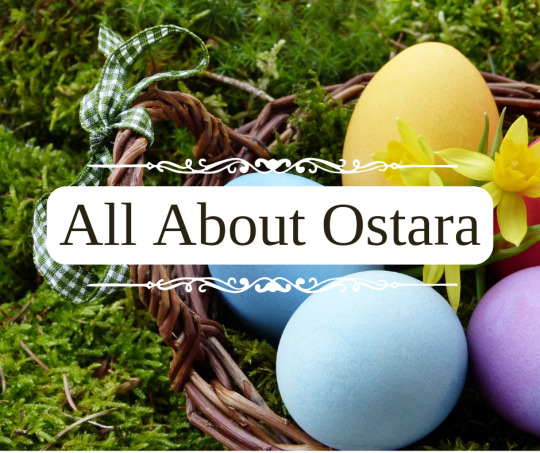
All About Ostara
In this context, Ostara is simply the name for the modern pagan celebration of the spring equinox, celebrated in the Northern Hemisphere around March 19th, or by some on the first full moon after the spring equinox. It is considered a Germanic holiday, but we'll talk a little about the different Goddesses associated with the holiday Ostara, as well as the history and where we're at today with our findings.
Unfortunately, there is not much historical text about the holiday Ostara or the associated ancient holiday Eostre, with the earliest known text being from an English monk from the 7th century, Venerable Bede. In his texts, he states that the rough equivalent of the month of April was dedicated to the Goddess Eostre and called Eosturmonath, but that was about all it mentioned.
Monks like Bede back in the day had orders to Christianize pagan traditions in order to slowly convert pagans to Christianity in the least-resistant way, which often meant adopting their festival dates, names of feasts, and whatnot, which was the purpose of mentioning this holiday in his texts in the first place.
Back in the day, the written reoccurant date of Easter had been debated since it began, as the Ressurection date was hard to nail down. Everyone just knew it happened in spring, so different regions celebrated it at different times. But, scholars believe the Christian church most likely saw that there were date overlaps in pagan celebrations, the Ressurection, and Passover as well, and decided to announce Easter Sunday would always fall on the sunday after the first full moon of the spring equinox, following popular pagan lunar traditions. They also adopted the new name from Eostre, cleverly combining the current pagan celebrations around rebirth and the sun into their own holiday traditions, in order to convert people to their religion, while also uniting their own people to celebrate on one date.
Although at one point these were all different celebrations, the Christian church did a very good job of combining and converting the pagan celebrations into their own, enmeshing them for life in history books and making it hard for modern day scholars to distinguish the origins of the pagan holidays seperate from the Christian church's.
After that, the next set of text with a reference to the holiday Ostara or Eostre came over a thousand years later during the Romantic period in 1835, by one of the Grimm brothers, Jacob, while he talked about mythology. In his work, he bridged Eostre with it's Germanic counterpart, Ostera or "Easter" as we know it today, and with the Goddess Ostara. In medieval Germany, they celebrated Ostarun in the month of Ostarmanoth, which gave way to the modern feast of Ostern ("Easter") today. He used these overlaps and more to claim that the two holidays and even Goddesses were most likely one historically
Just like with Grimm, there is mostly just speculation based on language, names, celebrations, etc. In modern-day society, it seems the holidays and Goddesses/Gods of Ostara, Eostre, and Easter have all been mashed up together from bridging multiple pagan religions with Christianity and struggling to seperate it again when we have almost no historical texts to help, since everything way back in the day was based on oral tradition.
As for the Goddess Eostre, who was supposedly a Goddess of fertility and light, she was so rooted in the region surrounding her that it was easier to adopt her namesake for the new Easter holiday (that enmeshed the series of Christian holidays) rather than rebrand under something Christian. According to Bede, her feasting was held in the month of April and celebrated spring. But that's all he mentioned, so her actual traditions have been lost to time, with only speculation to go off of.
After that, Grimm tried to link her with the Goddess Ostara, but we have no historical texts saying she is the same. Nowadays, the only mentions of the Goddess Eostre is with new-age pagan Wiccan practices where they, too, seemed to have linked her with the Goddess Ostara. Historically, it is most likely that the Goddess Eostre is a region-specific Goddess, as she was worshipped in Southeastern England by Anglo-Saxons, and that's where we see the oldest versions of her name referenced in text.
As for the Goddess Ostara, according to Grimm, she seems to have been the more wide-spread form of the Germanic Goddess Eostre, instead of region-specific, and he was the one who first translated her name to Ostara. This is the first historical text we have mentioning Ostara as a Goddess and not just a holiday, which means they (Eostre and Ostara) are technically one in the same, since Grimm was the one who translated the Goddesses name to German in the context that we use today.
In terms of associations with the newly translated Goddess Ostara, the first known reference of rabbits with Ostara in writing was mentioned in a mythology text written by Adolf Holtzmann in 1874 where he related the German tradition of the Easter Hare with Ostara by claiming the symbolism of 'the hare' was also probably sacred to the Goddess.
Afterwards, In 1889, an issue in the Journal of American Notes and Queries talks about the Germanic Tradition of the Easter Hare (gifting cotton stuffed flannel bunnies to children along with Easter eggs) and the story behind it, stating that "The hare was originally a bird, and was changed into a quadruped by the Goddess Ostara; in gratitude to Ostara or Eastre, the hare exercises its original bird function to lay eggs for the Goddess on her festal day." But that is as far as we've gotten in tracing it in texts.
Most likely, oral tradition has reigned supreme throughout history, and different narratives have surfaced about the origins of the symbolism with Ostara and rabbits and eggs and other things, so it's hard to know for certain what is "true" to celebrating the Goddess and holiday Ostara and what isn't.
In summary, based on the limited evidence that we have surrounding history on this holiday and deity(ies), you should feel free to celebrate Ostara in a way that is meaningful to you, especially since there is much overlap with multiple religions and practices. I did my best to round up the most commonly accepted ways to celebrate, the symbolism, and more related to the holiday and Goddess Ostara/Eostre.
Ostara Associations:
Colors - white, green, yellow, pink, purple, pastels
Food - eggs, fresh greens, dairy products, hot crossed buns, lamb, asparagus, honey, berries
Animals - hares/rabbits and song birds, baby animals, snakes
Items - decorated eggs, lillies, daffodils, tulips, crocuses, dandelions, lavender, other flowers, lemongrass, thyme, red clover, birch trees, seeds
Crystals - aquamarine, amethyst, rose quartz, moonstone, fluorite, amazonite, clear quartz
Other - fertility, renewal, dawn, spring, balance, joy, growth
Ways to Celebrate Ostara:
hold a feast, especially on the full moon after the equinox
plant seeds
connect with nature or go on a walk
decorate eggs
prepare your altar for spring
make a cotton stuffed flannel rabbit
decorate for spring with greenery and flowers
cleanse and clean your home
welcome the dawn and sunrise
bake hot crossed buns
create something
#ostara#eostre#eastre#easter#pagan#wiccan#witchy#witch#witchcore#witches#witchcraft#witchblr#witch community#goddess#gods#holiday#sabbat#sabbath#equinox#moon#full moon#magick#magic#spell#spellwork#cleansing#spiritualism#spirituality#spiritual#baby witch
36 notes
·
View notes
Text
Happy New Year!
Our Lady has gone down into that darkest place, has suffered and been broken, and She has triumphed! No soul shall be lost forever, no soul shall suffer in any eternal hell.
The world is fresh and new, reborn by Her Hand and flush with Divine Light and energy. And so today is the first day of spring, and also of a new year!
The Filianic Eastre is not dissimilar from its Christian (Easter) and neopagan (Ostara) counterparts, or from many springtime festivities around the world. Dancing, music, egg games & dyeing, flowers everywhere, and a big feast with plenty of dessert.
3344 (I.E.), is a year of Sai Thame, Janya of divine law and harmony. The year itself, as well as each month and week of the Filianic calendar will begin on Thamedi / Thursday, until next Eastre.
And the children of the earth cried: Lift up your voices in song and laughter, for the Princess of the World was dead and is alive again, was broken and is whole; and there is no place whereto Her joyous rule does not extend. Give praise to the Mother of All Things and praise to Her Daughter.
Rejoice, for the world is renewed.

#deanism#filianism#déanism#deanic holidays#goddess religion#vernal equinox#spring#spring equinox#The clear recital#Eastre
14 notes
·
View notes
Photo

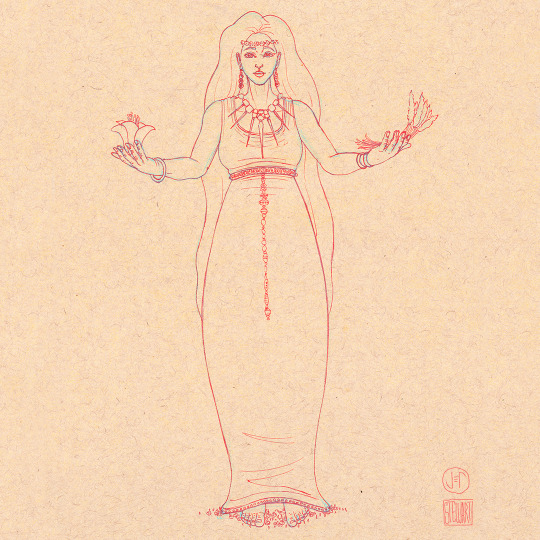
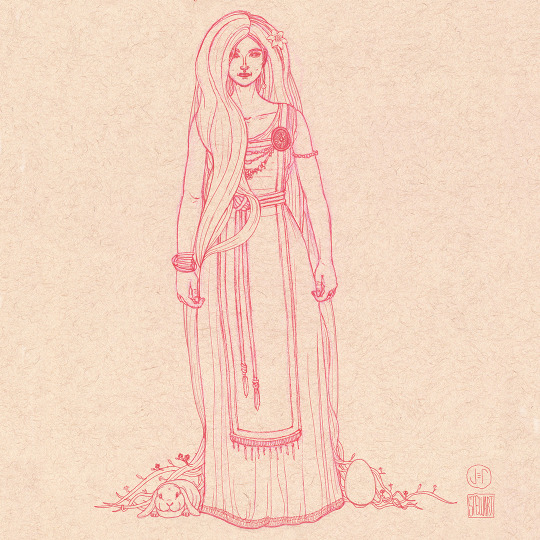
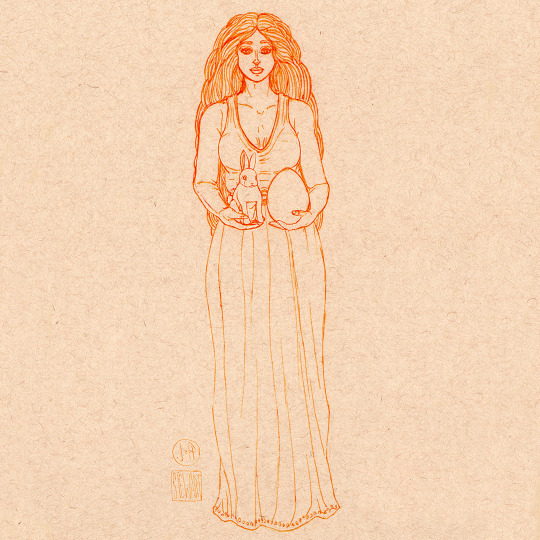

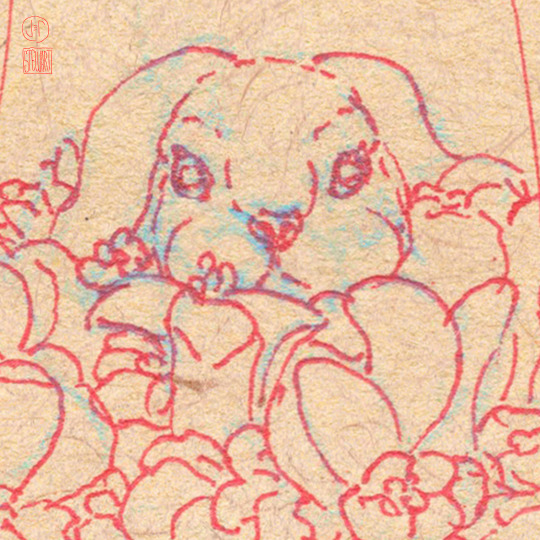
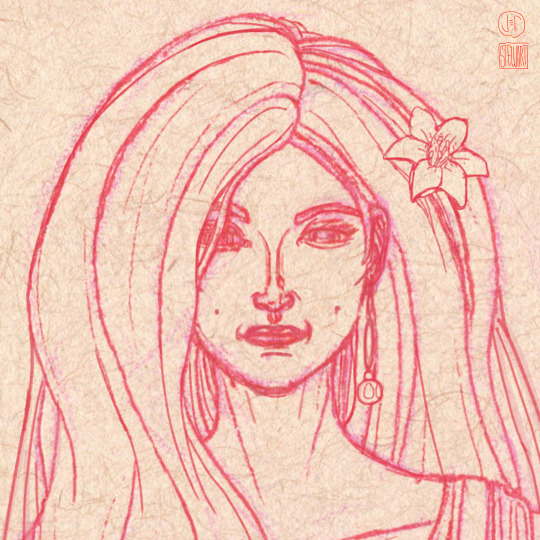
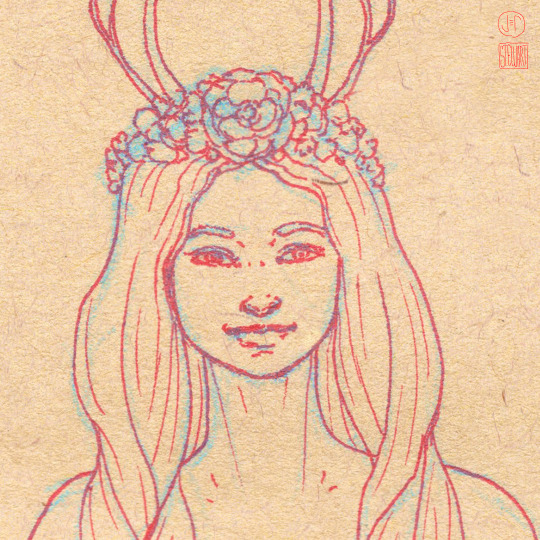

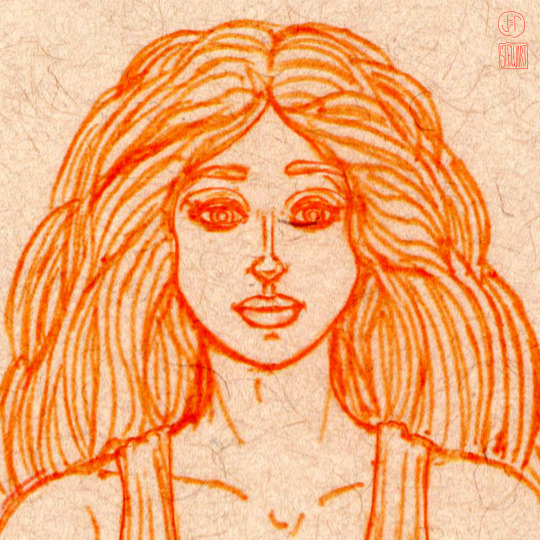
Some of my Easter sketches from my mythology character series.
2 notes
·
View notes
Text
O’ Eostre,
Lady of the Spring,
Woman adorned in flowers,
I raise my horn to you.
For you bring fresh fields,
and fertile fauna to the land.
Your coming signals the beginning of
life starting anew.
It is to you I make this blót,
and in your name I sprinkle the flowers with fresh water.
#eostre#eastre#eostreblot#eastreblot#anglo-saxon paganism#heathenry#anglo-saxon polytheism#devotional poetry
3 notes
·
View notes
Text

Have a great Easter Fire!
As it libben wer üntspringt oan de kâlde, deade grûn […] Dan is Eastre dêr en sy bringt ús har ljocht
1 note
·
View note
Link
'Easter Origins, Pagan Traditions, Rabbits laying Chicken Eggs, The Exodus & Black People' – 'The African History Network Show' with Michael Imhotep 4-9-23, 9pm EST Easter is a moveable Christian Holiday. It is celebrated on the 1st Sunday following the 1st full moon following the Vernal Equinox. The Vernal (Spring) Equinox marks the first day of Spring which usually comes March 20th or 21st. When Easter is celebrated is based upon Astronomy. This was one of the results of the Council of Nicea in 325 AD (Ecumenical Council). You can look up Easter in an Encyclopedia or Dictionary and it will tell you when it is celebrated. - Michael Imhotep #Easter #Eostre #Ostara #Ishtar #HappyEaster REGISTER NOW: Next Class Sat. 4-8-23, 2pm EST ‘Ancient Kemet, Moors, Understanding The Trans-Atlantic Slave Trade’ 12 Wk Online Course. https://theafricanhistorynetwork.com
0 notes
Text
i uh. have gotten distracted and forgot the yearly happy eastre but orthodox easter is my second chance to make that pun, so i wish yall a very very belated
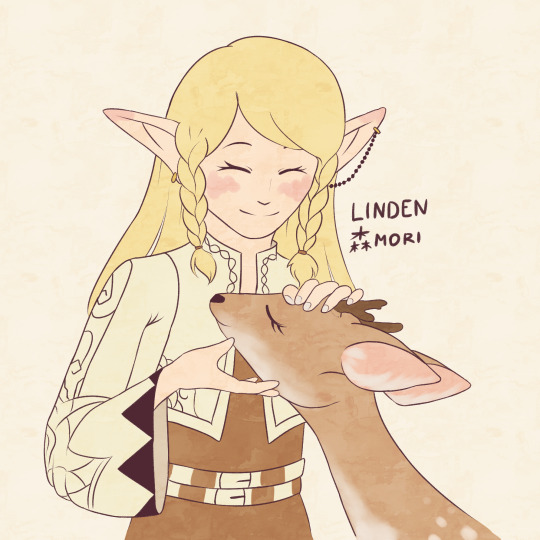
(this year eastre is happy about meeting a cute fawn!)
#elf#fawn#deer#fantasy art#cottagecore art#(kinda)#linden creations#linden draws#c:ea#yearly happy eastre#idr if i ever posted the other ... 2? 3? yearly happy eastres
11 notes
·
View notes
Text
happy easter everyone!
5 notes
·
View notes
Photo

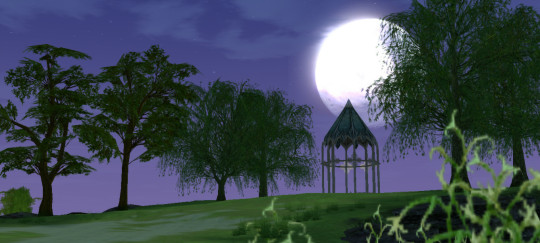
9 notes
·
View notes
Text
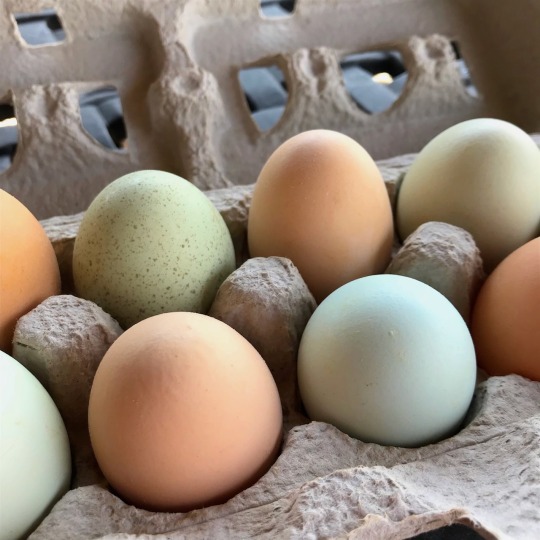
natural Easter eggs
Easter gets its name from the Teutonic goddess of spring and the dawn, whose name is spelled Oestre or Eastre (the origin of the word "east" comes from various Germanic, Austro-Hungarian words for dawn.) Her chief symbols were the rabbit for fertility and the egg representing the cosmic egg of creation. This is where the customs of Easter Eggs and the Easter bunny originated.
Blessed Be in the Season of Spring! Go Forth and Flower!
74 notes
·
View notes
Text

hapoy eastr to those who celebrate :^)
#deltarune#deltarune fanart#spamton#spamton g spamton#big shot era#big shot spamton#bunny suit#uhhh..#if you know me on discord#you didnt see this#move along#have a nice day guys :3
68 notes
·
View notes
Text
Growing Up Filianist
These are just some differences I’ve noticed across the years. I hope this post is well put together and makes enough sense. I have tried my best not to ramble, because I have the terrible habit of doing so. Requested by @tenebrouscandor-blog :)
🌞🌻🪻
1. Not Having a Church Building
—> our Rite of Sacrifice was held in our living room. 7 aunts and uncles and their respective spouses, me and my 4 siblings, and my 15 cousins all crowded together in that space! Plus my Grandmother, who was the lady of our household. While all my friends told me about their beautiful churches and intricate mosques I would in turn tell them of our precious home altar, decorated with all sorts of precious trinkets, and the icons of the Mother and Daughter that were plastered about. Sure, it was a tight squeeze. But we laughed and rejoiced so much on Holy Days and Days of Observance that nobody ever complained.
2. Having a Home Altar
—> I remember mentioning one time to my friends in Home Ec. class (it must’ve been around middle school) that I was excited to place the gingerbread cookies we had just made on our home altar. None of them seemed to have a clue what I was talking about! Imagine my surprise. I was so sad that none of them had ever experienced the happiness of placing any home-baked goods or handmade craft we (my cousins and siblings and i) were proud of on the altar. My Grandmother always told us that when we placed them on the altar it was as if we were showing our Mother our gifts just as we show our earthly mothers things we are proud of. A way of saying thank you to our Mother for all the wonderful tools she gives us so that we are able to make whatever thing we made. It has a large statue of our Mother as the Virgin Mary, and has different cloth colors depending the season or holiday. Incense was always burning on it and the type would change according to the appropriate season or holiday. A little jar for our prayers would lay in front of it and if there was some prayer we were maybe too embarrassed to pray with everybody about we could drop it in the little jar. I could talk for hours on our home altar, so if anyone is interested i’ll make a seperate post on that :)
3. Holidays!
—> one of the most noticeable differences for me was the different holidays my family observed compared to, for example, my Christian friend. Halloween became Tamala, a 3 day celebration full of both solemnity and joy. Christmas was known as the Nativity, with a Fir Tree and a Star Fairy involved. New Years was celebrated but we also enjoyed the Day of Sai Herthe. Easter was spelled as Eastre to me (i remember my teachers being quite mad about that) and was much more stretched out than my christian friends Easter Mass and egg hunt. Of course, Filianism has its own special holidays. Maura, for example, is similar to Lent but not quite. Med-Maura is not a thing to Catholics, for example. (The month of Maura seemed sooo long to us as kids because we knew we would be gently encouraged to give something up in remembrance of our Lady’s death.) I could go on, but then I would be rambling. Once again, if anyone has more interest in hearing on specific holidays or just holidays in general please let me know!
4. Lady of the Household
The men in my family were most definitely never oppressed or hated or looked upon as lesser. There was, though, an emphasis on there being a lady of the household instead of a lord. Usually the oldest woman in the home. In my family that was my Grandmother, because she lived with us. For my cousins it was their own mother. the lady of the household was meant to be wise and patient and thoughtful. To guide the family closer to our Mother and to each other. She would sit at the head of the table, and lead out in most prayers (at dinner us kids would rotate on whose turn it was to pray) , and have the ‘final word’ if you will, in most if not all matters. So it was quite a shock to have a sleepover at a friends house and see their dad sitting at the head of the table instead of their mother (at my house it would be my Grandmother, but at my cousins houses it was their mother), and their father having the blessing, and all that.
I felt rather stupid for feeling shocked, because i’d taken world history. i knew that most of the world followed a male-dominated societal structure. but i’d never experienced a household like that before my first sleepover at 15. It was also quite different that most if not all of my friends would say “I have to ask my dad” and i would say “i have to ask my Grandmother”.
🌞🪻🌻
I have tried my best to explain everything in a way that would make the most sense. I don’t know if I have achieved it, so if there are any things that need clarification please let me know and I will do my best to do so. I have written and rewritten this post multiple times over the past day or so because I was fearful that my points wouldn’t be understood or be criticized. I feel as though I always say this but: please remember that this is how I was raised. Perhaps other filianists would raise their children differently. I’m sure that’s alright. Everything I mention is not out of me claiming that the way I was raised is the only way, I am only showing a way.
Thank you!
Many blessings to you all
🌞🪻🌻
17 notes
·
View notes
Text
Moura Approaches
The "Filianic Lent" -- The month of Moura -- begins on Feb 20. In this month, we honor the descent of the Maid into the darkest place, Her pain as She journeys deeper into darkness, and eventually Her death.
It is a season of fasting from luxuries such as sugar, chocolate, alcohol, and meat, and of trying to deepen our spiritual life. Thus, many choose to forgo practices they see as vices or overly present in their lives, such as social media or other technology, and pray and study scripture more frequently.
As part of my observance, I will be limiting my internet and social media usage. So this means I will not be using Tumblr until Moura ends! I'll have scheduled posts for the dates below, so that I don't need to worry during the month.
Upcoming dates are:
Moura Eve - 28 Brighe / Feb 19
Moura Day - 1 Moura / Feb 20
Med-Moura - 14 Moura / March 4 (in leap years)
Kala - 28 Moura / March 18 (in leap years)
-------- The day with no date (March 19-20 in leap years)
Eastre - 1 Culverine / March 21
May Our Lady bless you in the upcoming season!
Radiant Daughter of Eternal Light,
You have torn Yourself from Your own Self for my sake.
Forgive me.
I have given myself freely into the claws of Irkalla,
And my soul into eternal darkness;
Yet You have interposed Your sacred body,
Saying: take not this soul, take rather Me.
O, You that have prayed beneath the full moon and by the running streams,
Teach me the power of true devotion.
12 notes
·
View notes
Text
The feast day of Easter was first a pagan holiday of renewal and rebirth. Honored in the early spring, it praised the pagan goddess of fertility and spring known as 'Ostara', 'Eastre' or 'Eostre'. The word “Easter” finds its etymology from the goddess's name, and the eggs and rabbits we use today are symbols of fertility and birth.

8 notes
·
View notes
Text
Val helps spell learn love potions because he wants to know them too :)
Then he learns he can naturally make them, a pinkish venom that can gush out a gland in his mouth ( like vamp venom?) so he gives them to spelldon cus he likes learning about vals biology :)
This is purely a headcannon:))))
Happy easter and happy ostara ( or known as eastre and eostre 🐰)
( I'll edit this when I wake up :))
#kieran valentine#spelldon cauldronello#spelldon x valentine#valentine x spelldon#monster high#spelltine#monster high headcanons#lgbtq#Man I'm so gay#help I feel in love with a man
8 notes
·
View notes
Note
Do you celebrate Palm Sunday?
I had to look this up and I figured out what it is xD Ishtar Sun day!
The original pagan holiday celebrated the descent and resurrection of the goddess Ishtar, or Inanna.
"The Easter story comes from the Sumerian legend of Damuzi (Tammuz) and his wife Inanna (Ishtar), an epic myth called “The Descent of Inanna” found inscribed on cuneiform clay tablets dating back to 2100 BC. When Tammuz dies, Ishtar is grief–stricken and follows him to the underworld. In the underworld, she enters through seven gates, and her worldly attire is removed. "Naked and bowed low" she is judged, killed, and then hung on display. In her absence, the earth loses its fertility, crops cease to grow and animals stop reproducing. Unless something is done, all life on earth will end.
After Inanna has been missing for three days her assistant goes to other gods for help. Finally one of them Enki, creates two creatures who carry the plant of life and water of life down to the Underworld, sprinkling them on Inanna and Damuzi, resurrecting them, and giving them the power to return to the earth as the light of the sun for six months. After the six months are up, Tammuz returns to the underworld of the dead, remaining there for another six months, and Ishtar pursues him, prompting the water god to rescue them both. Thus were the cycles of winter death and spring life." - Source
That makes more sense, all original holidays celebrated the circle of light and darkness that we go trough each year with the movements of the Earth in relation to the Sun. I love how the holidays created stories around something that is very tangible and observable every year! Christianity is pretending that all of that stuff outside isn't even that important and instead we should focus on this one dude. And it was a woman who was originally resurrected - later they found out that in order to create jesus' tomb, they tore down Ishtar's temple. Vile and disrespectful. And there's more:
"Easter as a Celebration of the Goddess of Spring
A related perspective is that, rather than being a representation of the story of Ishtar, Easter was originally a celebration of Eostre, goddess of Spring, otherwise known as Ostara, Austra, and Eastre. One of the most revered aspects of Ostara for both ancient and modern observers is a spirit of renewal.
Celebrated at Spring Equinox on March 21, Ostara marks the day when light is equal to darkness, and will continue to grow. As the bringer of light after a long dark winter, the goddess was often depicted with the hare, an animal that represents the arrival of spring as well as the fertility of the season.
According to Jacob Grimm’s Deutsche Mythologie, the idea of resurrection was ingrained within the celebration of Ostara: “Ostara, Eástre seems therefore to have been the divinity of the radiant dawn, of upspringing light, a spectacle that brings joy and blessing, whose meaning could be easily adapted by the resurrection-day of the christian’s God.”
Most analyses of the origin of the word ‘Easter’ agree that it was named after Eostre, an ancient word meaning ‘spring’, though many European languages use one form or another of the Latin name for Easter, Pascha, which is derived from the Hebrew Pesach, meaning Passover."
That's two female goddesses they conveniently attempted to replace with one male :( Women own the spring and the power of resurrection, as we own the power of birth as well!
Wish I knew in detail what the pagan holidays looked like and how they were celebrated, I'd love to get into that.
10 notes
·
View notes